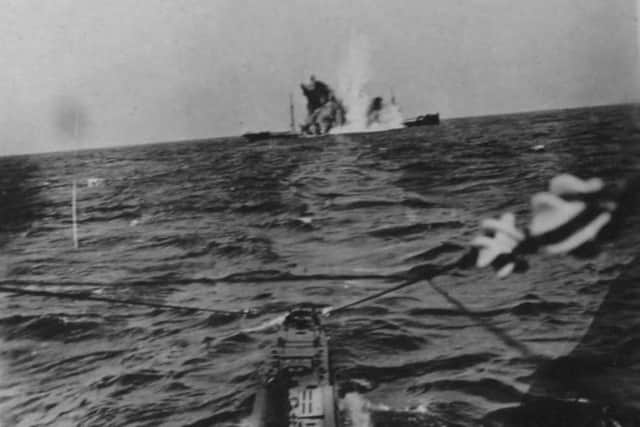U-boats took their toll on Hartlepool-built ships


It was a stormy and unpredictable ocean and it got worse on the approach to the British Isles.
German U-boats picked off the slow, unarmed and un-escorted cargo ships.


Advertisement
Hide AdAdvertisement
Hide AdThe 7,100 ton Noorderdijk was one of the largest Hartlepool-built ships to be lost during the First World War.
She was launched from the William Gray shipyard on February 21, 1913.
Almost exactly four years later, on February 22, 1917, on a voyage from New York to Rotterdam, she was stopped by the German submarine U-21, north-west of the Scilly Isles.
After her crew had abandoned ship, she was torpedoed, sending the ship and her cargo of wheat and corn meal to the bottom.


Advertisement
Hide AdAdvertisement
Hide AdBut that was just one example of town ships which met their end at the hands of the German navy.
On March 27, 1915, the 4,000 ton steamship South Point, built at Irvine’s shipyard, was torpedoed and sunk by U-28 as she approached the Bristol Channel.
The ship, owned by the Norfolk & North American Steam Shipping Co. Ltd, had sailed from Philadelphia bound for Cardiff with a cargo of bulk china clay and casks.
She went down just 60 miles west of Lundy Island, without loss of life.
Advertisement
Hide AdAdvertisement
Hide AdOn Saturday, May 29, 1915, the 3,000 ton steamer Dixiana was torpedoed off the Cornish coast by U-41.
She had been launched from the William Gray shipyard in 1901 as the Putney Bridge, but by 1916 had been sold to the Dixiana Steamship Company and re-named.
Sailing from Savannah, Georgia, bound for the French port of Le Havre with a cargo of cotton, her captain was deceived by the surfaced German U-boat being disguised as a small sailing craft with sails hoisted.
Having abandoned ship without loss, her 26-man crew were picked up the next day by a passing Greek steamer.
Advertisement
Hide AdAdvertisement
Hide AdThe Leyland steamship Bostonian was torpedoed and sunk, without warning, off the coast of Devon on October 10, 1917.
Launched from the William Gray shipyard in 1896 as the Cambrian, she fell victim to the German submarine U-53, on a voyage from Philadelphia to London with a general cargo. Four lives were lost.
Our thanks go to the Heritage Lottery-funded ‘Heroism and Heartbreak: True Tales from the Hartlepools at War’ Project for this article.
They would love to hear from anyone with a First World War Hartlepool story to tell.
Advertisement
Hide AdAdvertisement
Hide AdIf you have a photograph, letter, diary, or a vague recollection of a family member involved in the war, email [email protected], phone (01429) 242909, or drop-in to the Central Library in York Road.